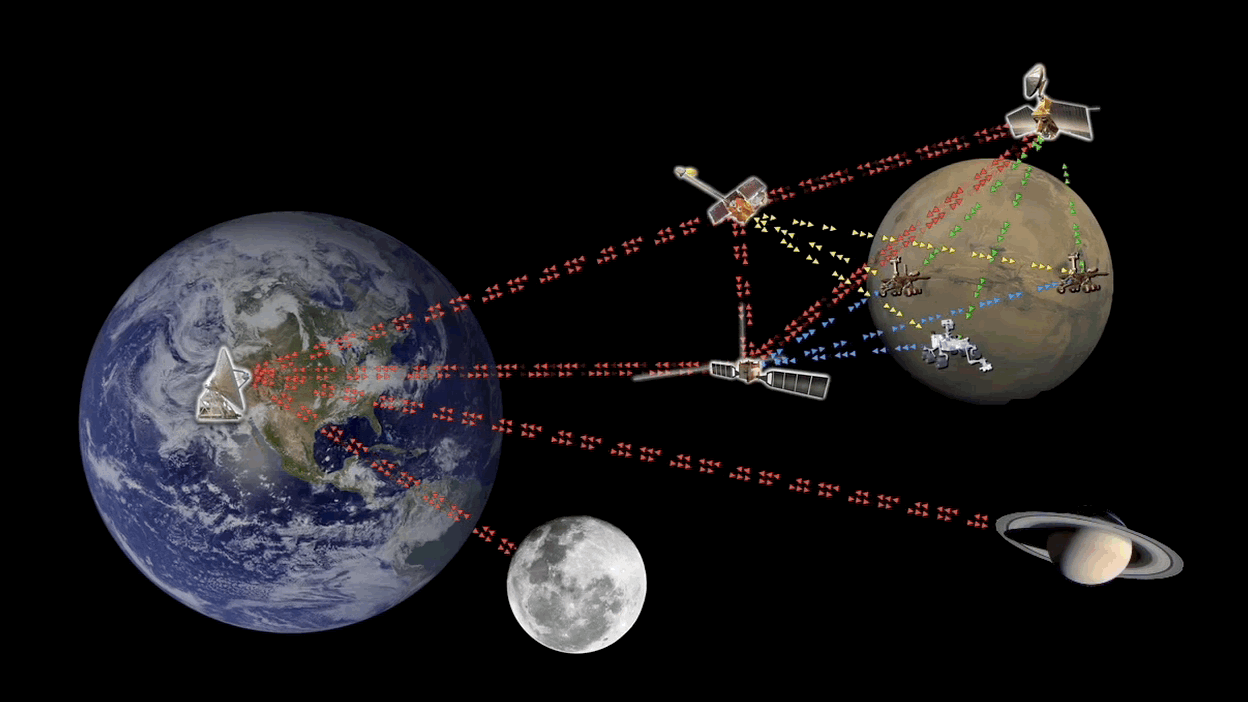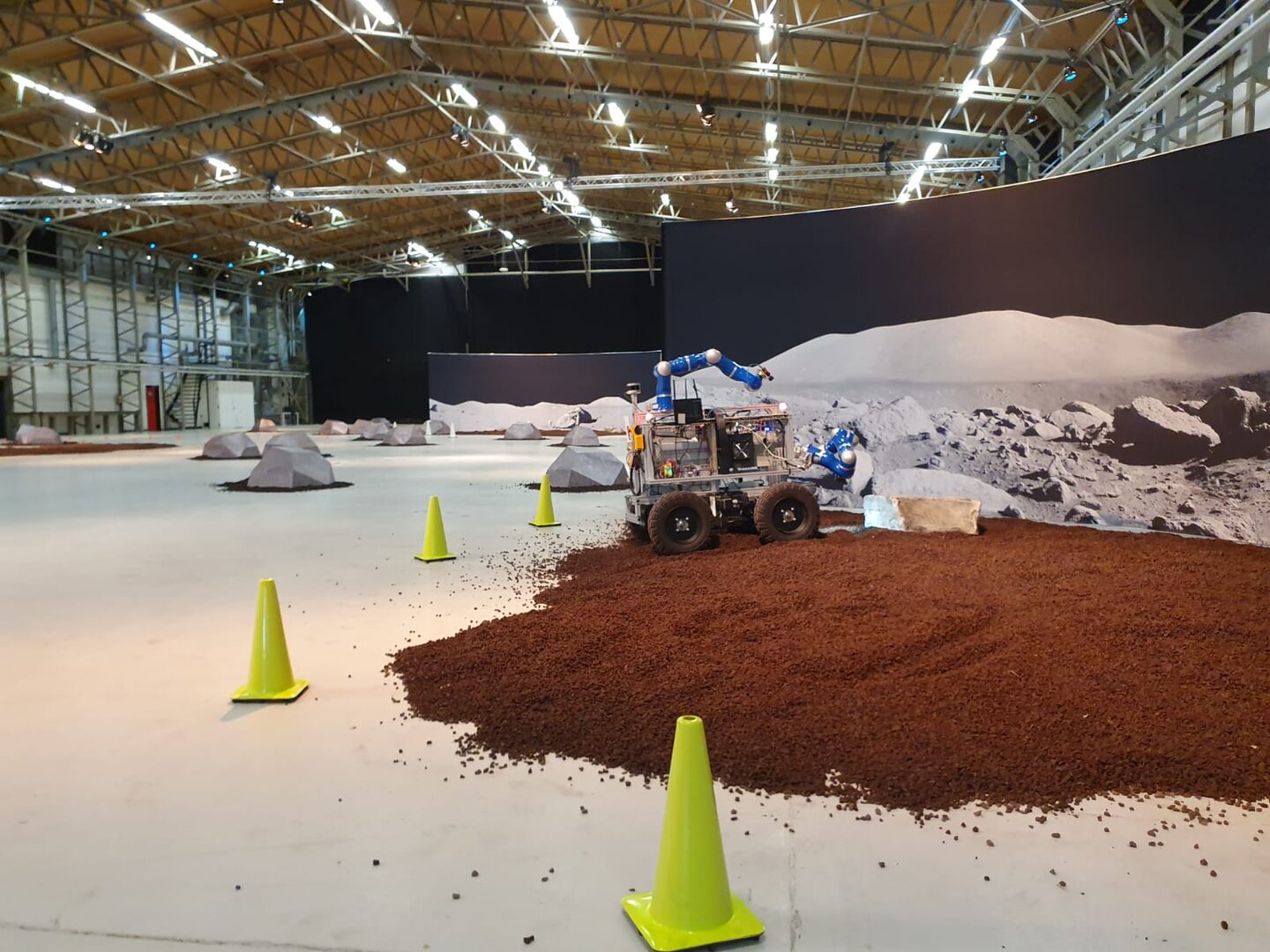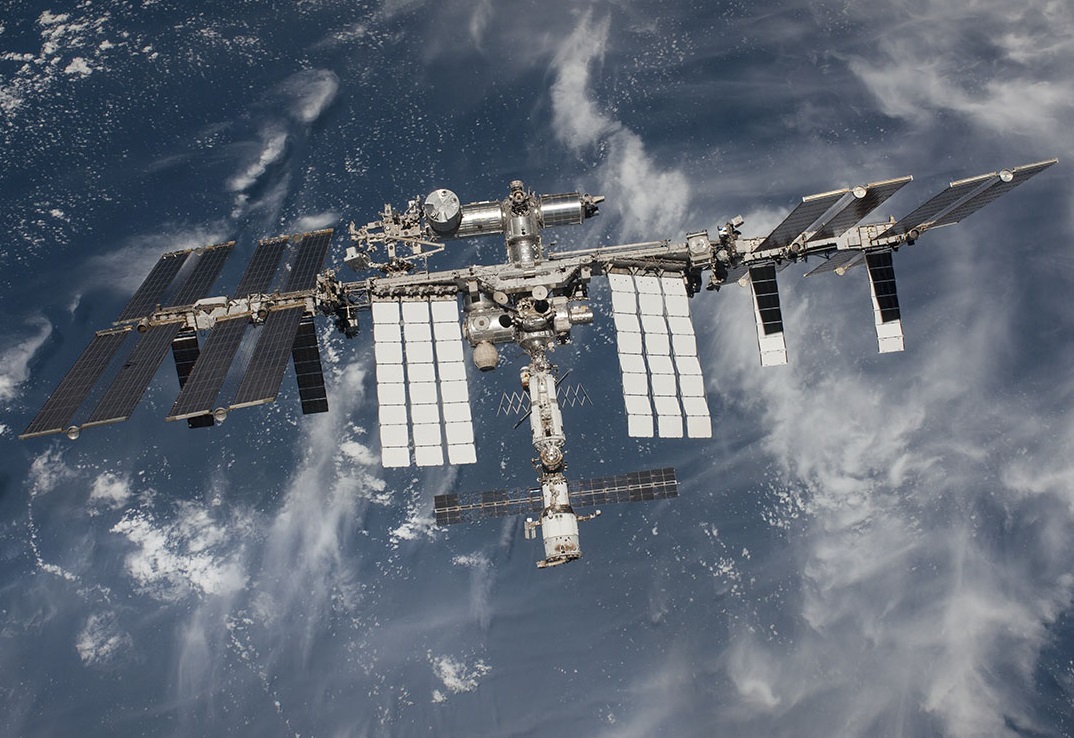You’ve done it. After years of effort and training, sacrifice, and pain, you become an astronaut and have finally set foot on Mars. Time to post your triumph on TikTok for that sweet social media cred. If only you can get a signal.
Continue reading “Extending Earth's Internet to Mars With Orbital Data Servers”Elon Musk says that SpaceX Has no Plans to Spin Off Starlink
Last week, the Satellite 2020 Conference & Exhibition wrapped up after four days of presentations and addresses from some of the leading experts in the telecommunications industry. As advertised, SpaceX founder Elon Musk was on hand to deliver a keynote speech in which he announced that (contrary to earlier statements) Starlink will not be spun off and become its own business enterprise.
Continue reading “Elon Musk says that SpaceX Has no Plans to Spin Off Starlink”ESA Astronaut Luca Parmitano will be Controlling a Rover From Space
Update: The Analog-1 experiment was a complete success! Astronaut Parmitano completed all the requirements within the specified time frame (one hour). This test is the first step in validating the teleoperation technology.
NASA has been rather up-front about its desire to send astronauts back to the Moon and on to Mars in the coming years. They are joined by multiple space agencies (such as the ESA, Roscosmos, the CNSA and the IRSO) who also wish to conduct their first crewed missions beyond Earth. However, what is often overlooked is the role teleoperated missions will play in the near-future – where humans and robots explore hand-in-hand.
For example, the ESA has embarked upon a series of experiments collectively named Analog-1, where astronauts control robots from space. Yesterday (Nov. 18th), ESA astronaut Luca Parmitano took control of a robot in the Netherlands from the ISS. This experiment and others like it will help prepare astronauts for future missions that will involve the exploration of hazardous or inaccessible off-world environments.
Continue reading “ESA Astronaut Luca Parmitano will be Controlling a Rover From Space”Elon Musk Tweets with Starlink. Services Could be Available Next Year.
In January of 2015, Elon Musk shared his vision of creating a constellation of satellites in Low Earth Orbit (LEO) that would provide broadband internet access to the entire planet. Back in May, SpaceX launched the first batch of 60 Starlink satellites to orbit, with plans to send an additional 1,584 to space by 2024 and 2,200 more by 2027.
Naturally, consumers have been wondering when they will be able to avail themselves of this new internet service. As SpaceX Chief Operations Officer Gwynne Shotwell announced on October 22nd, the company should be able to offer broadband access within the US by mid-2020. This came a day after Musk sent the inaugural tweet using Starlink services.
Continue reading “Elon Musk Tweets with Starlink. Services Could be Available Next Year.”SpaceX Files a Request to Launch Another 30,000 Satellites for Starlink, on Top of the 12,000 They’re Already Planning to Launch

SpaceX is really kicking things into high-gear with its Starlink network. The creation of this satellite constellation is central to Elon Musk’s vision of providing high-bandwidth internet access to a global market. Deployment began in earnest back in May with the launch of the first sixty Starlink satellites, with plans to launch an additional 1,584 by 2024 and 2,200 by 2027.
Until now, SpaceX’s long-term goal was to create a constellation of 12,000 satellites at altitudes ranging from 328 km to 580 km (200 to 360 mi) – based on what the FCC has approved so far. But according to recent filings with the International Telecommunication Union (ITU), SpaceX intends to send an additional 30,000 Starlink satellites to Low Earth Orbit (LEO) in the coming years.
Continue reading “SpaceX Files a Request to Launch Another 30,000 Satellites for Starlink, on Top of the 12,000 They’re Already Planning to Launch”Upgraded ISS Now Has a 600 Megabit per Second Internet Connection
In the digital age, connectivity and bandwidth are important, even if you’re in Low Earth Orbit (LEO). And when you’re performing research and experiments that could help pave the way for future missions to the Moon, to Mars, and other deep-space destinations, it’s especially important. Hence why NASA recently upgraded the ISS’ connection, effectively doubling the rate at which it can send and receive data.
Continue reading “Upgraded ISS Now Has a 600 Megabit per Second Internet Connection”SpaceX Gives More Details on how their Starlink Internet Service Will Work. Less Satellites, Lower Orbit, Shorter Transmission times, Shorter Lifespans
For years, Elon Musk has talked about his plans to provide broadband internet access to the world using a constellation of satellites. Known as Starlink, this constellation was originally going to of nearly 12,000 low-cost satellites providing a terabit internet service. The first batch of these satellites is scheduled to launch in June of 2019, with the full constellation being deployed by the mid-2020s.
While the bare bones of this plan have been public knowledge for some time, Musk and the company he founded to reinvigorate space exploration have been somewhat scant on the details. But thanks to a simulation created by Prof. Mark Handley of University College London, the world may finally get an idea of what Starlink might look like.
This is the Year Internet From Space Gets Really Serious

Between 2005 and 2017, the number of people who are digitally connected increased by a factor of three and a half. In other words, the number of people with internet access went from just over 1 billion to about 3.5, from about 15% to roughly half the world’s population. And in the coming decade, it is estimated that roughly 5 billion people – that’s 70% of the world’s population – will have internet access.
Much is this growth is powered by new ways of in which internet services are being provided, which in the coming years will include space-based internet. In 2018 alone, eight new constellations of internet satellites will begin deployment to Low-Earth Orbit (LEO) and Medium-Earth Orbit (MEO). Once operational, these constellations are expected to not only increas broadband access, but also demonstrate the soundness of the business model.
For instance, SpaceX will be launching a prototype internet satellite this year, the first of a planned constellation of 4,425 satellites that will make up its Starlink Service. As part of Elon Musk’s vision to bring internet access to the entire globe (one of many he’s had in recent years!), this constellation will be deployed to altitudes of 1,110 to 1,325 km (685-823 mi) – i.e. within LEO – by 2024.
Telecom and aerospace giants Samsung and Boeing are also sending internet satellites to orbit this year. In Samsung’s case, the plan is to begin deploying the first of 4,600 satellites to LEO by 2028. Once operational, this interconnected constellation will provide a 200-GB per month service in the V band for up to 5 billion users. Boeing has similar plans for a 2,956 constellation that will provide enhanced broadband (also in the V band).
The first part of this system will consist of 1,396 satellites deployed to an altitude of 1,200 km (746 mi) within the first six years. Others companies that are getting in on the ground floor of the space-based internet trend include OneWeb, Telesat LEO, SES O3B, Iridium Next and LeoSat. Each of them have plans to send between a few dozen and a few hundred satellites to LEO to enhance global bandwidth, starting this year.
Iridium, LeoSat, and SES O3B have all entered into partnerships with Thales Alenia Space, a leading designer of telecommunication and navigation satellites as well as orbital infrastructure. Thales’ resume also includes providing parts and services for the International Space Station, as well as playing major role in the development of the ATV cargo vessel, as part of the NASA/ESA Cygnus program.
In conjunction with Thales and Boeing, SES 03b plans to use its proposed constellation of 27 satellites to bridge the global digital divide. In the past, O3b was in the practice of providing cruise ships with wireless access. After merging with SES in 2016, they expanded their vision to include geosynchronous-Earth-oribit and MEO satellites. The company plans to have all its satellites operational by 2021.
Iridium is also partnering with Orbital ATK, the commercial aerospace company, to make their constellation happen. And whereas other companies are focused on providing enhanced bandwidth and access, Iridium’s main goal is to provide safety services for cockpit Wi-Fi. These services will be restricted to non-passenger flights for the time being, and will operate in the L and Ka bands.
And the there’s LeoSat’s plan to send up to 108 satellites to LEO which will be interconnected through laser links to provide what they describe as “an optical backbone in space about 1.5 times faster than terrestrial fiber backbones”. The first of these small, high-throughput satellites – which will deliver services in the Ka-band – is scheduled to launch in 2019.
Similarly, Telesat LEO hopes to create an internet satellite network to provide services that are comparable to fiber-optic internet connections. According to the company, their services will target “busy airports; military operations on land, sea and air; major shipping ports; large, remote communities; and other areas of concentrated demand.” The company plans to deploy two prototype satellites to LEO later this year, which were developed in conjunction with Airbus’ SSTL and Space Systems Loral.
With all the developments taking place these days, it does seem like the dream of a global internet (much like the Internet of Things (IoT) is fast becoming a reality. In the coming decades, we may look back at the late 20th and early 21st centuries the same way we look at the stone ages. Compared to a world where almost everyone has internet access and can download, upload, stream and surf, a world where only a few million people could do that will seem quite primitive!
Featured: Aviation Week, Popular Mechanics





